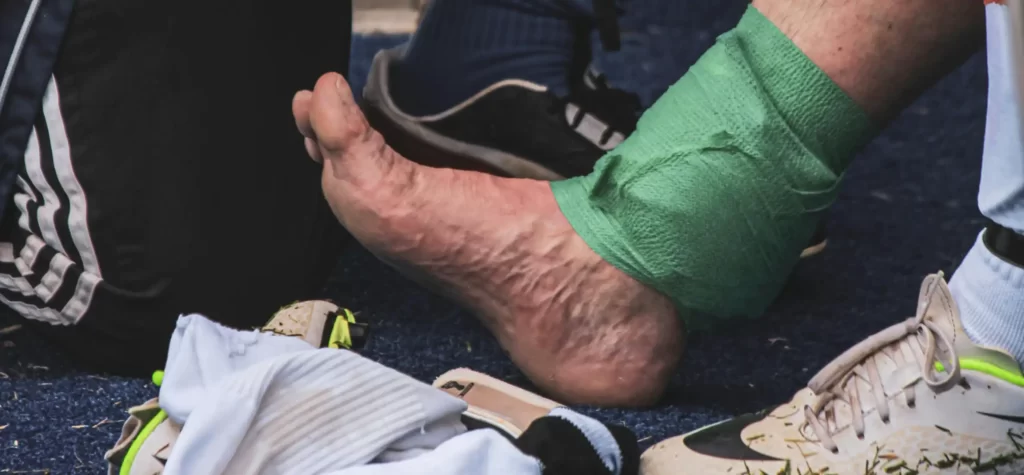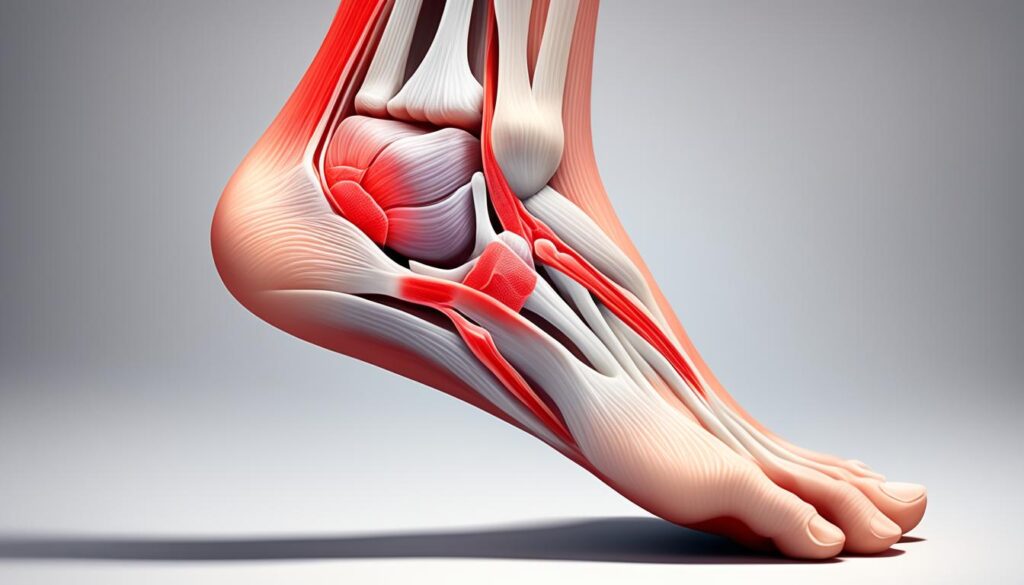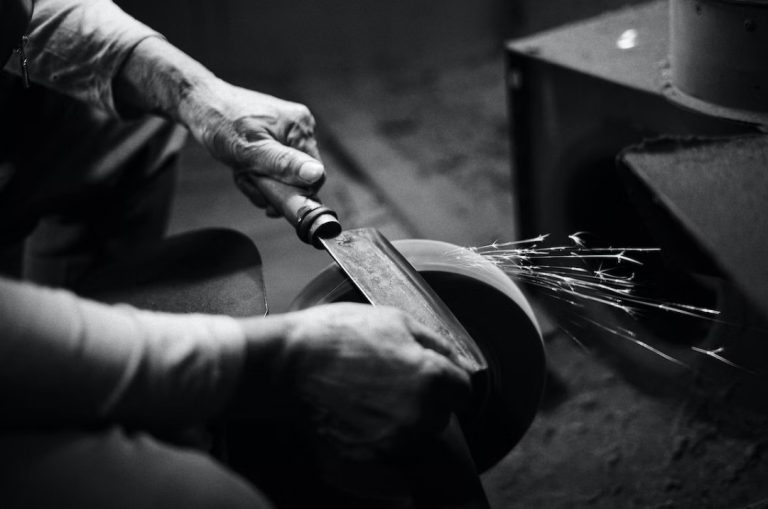Ankle Pain: Causes, Symptoms and Treatment Options
Did you know, ankle pain hits around 2 million Americans yearly? It comes from many things, like sudden injuries or long-term conditions. Knowing the why, spotting the signs, and learning about treatments help fight ankle pain. With the right care, you can move freely again.
Ankle pain is widespread and can hurt for various reasons. It might be from a sudden blow, arthritis, or just too much use. This pain can be small or so bad it stops you from moving. Learning more about it, including the causes and treatments, can help make the pain go away. Let’s go in-depth on what makes ankles hurt and how to heal them.
### Key Takeaways
– Ankle pain impacts about 2 million people in the U.S. each year
– It can happen from injuries, arthritis, or using your ankles too much
– Common signs are swelling, bruising, not moving your foot much, and feeling shaky
– Treatments can be simple like resting and ice, working with a therapist, or sometimes surgery
– Seeing a doctor soon is key to finding out what’s wrong and treating ankle pain well
Understanding Ankle Pain
Ankle pain shows up in various forms. It’s crucial to know the common kinds for the right treatment. Key types of ankle pain are:
Common Types of Ankle Pain
– Sprains happen when ligaments twist or roll your ankle suddenly.
– Fractures are breaks in ankle bones from trauma or conditions like osteoporosis.
– Tendinitis is swelling in ankle tendons from overuse or repeatedly doing the same thing.
– Arthritis is a joint problem. It makes ankles hurt, stiff, and hard to move. This can be from different types of arthritis, like osteoarthritis.
Anatomy of the Ankle Joint
The ankle joint has many parts working together. It includes bones, ligaments, and tendons.
It has the tibia and fibula from the lower leg. Also, the talus, a bone in the foot.
Ligaments and the Achilles tendon help keep the joint strong and movable. Knowing the ankle’s parts helps find the cause of pain.
Causes of Ankle Pain
Ankle injuries often cause pain. These can be mild sprains to severe fractures. Sprains occur when the ankle’s ligaments are stretched or torn, usually from a twist or roll. They range from mild to severe. Fractures are breaks in the ankle’s bones and may need surgery. The ankle might also face tendon tears, stress fractures, and overuse injuries.
Arthritis in the Ankle
Arthritis is a common pain cause. The ankle may get osteoarthritis or rheumatoid arthritis. Osteoarthritis happens as the ankle’s cartilage wears down, causing pain and stiffness. This is linked with aging, past injuries, or overuse. Rheumatoid arthritis is when the immune system attacks joints. It causes ankle and other joint pain, swelling, and inflammation.
Tendinitis and Overuse
Ankle tendinitis and overuse can lead to pain. This happens from repetitive use or stress on the tendons. Achilles tendinitis and posterior tibial tendinitis are common, causing inflammation and pain. They are often from too much activity, bad shoes, or body issues.

Symptoms of Ankle Pain
Ankle pain has many symptoms, depending on the cause. These include swelling, bruising, and feeling like the ankle is not stable. You might also have trouble moving your ankle and feel weak.
Swelling and Bruising
Swelling and fluid in the ankle can point to an issue like injury or arthritis. Seeing bruising suggests a sprain or break.
Limited Range of Motion
If you have ankle pain, you may find moving your ankle hard. This could be because of swelling or something not working right in your joint. It can really slow you down and make walking tough.
Instability and Weakness
Having ankle pain can make the ankle feel weak or not steady. This makes walking and doing sports hard. It’s often due to hurt ligaments, weak muscles, or not feeling where your ankle is.
Ankle Sprains
Ankle sprains are quite common. They happen when the ligaments in your ankle stretch too much. This can happen from a quick twist or roll of your ankle. The severity of a sprain is categorized from Grade I (mild) to Grade III (severe).
Grades of Ankle Sprains
There are three grades of ankle sprains:
Grade I: It’s a mild sprain. The ligament has minor stretching or tearing. Swelling and discomfort are not so bad.
Grade II: This is a moderate sprain. It involves part of the ligament tearing. This can lead to more swelling, bruising, and the ankle not working as it should.
Grade III: A complete tear of a ligament causes a severe sprain. It results in a lot of swelling, the ankle being very unstable, and you can’t put weight on it.
Symptoms of Ankle Sprains
If you have an ankle sprain, you’ll notice:
Pain: It can be from a little ache to a lot of unbearable pain. This depends on how bad the sprain is.
Swelling: Your ankle can look larger than usual. This is from the body’s reaction to the injury, and it can hurt.
Bruising: It causes the skin to change color. This happens because blood collects under your skin.
Instability: Your ankle might feel weak and not support you well. This makes it hard to walk or play sports.
Treating Ankle Sprains
The first treatment for an ankle sprain is usually the RICE method. That stands for Rest, Ice, Compression, and Elevation. After that, you slowly start exercising your ankle again. For worse sprains, you might need:
Immobilization: This means keeping your ankle still with a brace or crutches. It helps the ligament heal without moving too much.
Physical therapy: You do specific exercises to get your ankle moving better, stronger, and more balanced.
Anti-inflammatory medications: These help with the pain and swelling.
Gradual return to activity: You have a plan to safely get back to sports or exercise. This is to avoid getting hurt again.

Ankle Fractures
Fractures in the ankle can be mild or serious. They depend on which bones are hurt and how badly. You might have small cracks or full breaks in bones like the tibia, fibula, and talus.
Types of Ankle Fractures
Here are some usual ankle fractures:
- Tibial plafond fractures: Breaks in the lower part of the tibia, the bigger lower leg bone.
- Bimalleolar fractures: Both the inside and outside bony bumps around the ankle are broken.
- Trimalleolar fractures: All three ankle bumps, including the back one, are broken.
- Isolated fibular fractures: The fibula, the smaller lower leg bone, is broken.
Symptoms of Ankle Fractures
Ankle fractures feel like a severe ankle sprain but worse. You might have these signs:
- Intense, localized pain that gets worse when you move.
- Significant swelling and bruising around the area.
- Instability and can’t stand on the ankle.
- Deformity or abnormal positioning of the ankle or foot.
- In very bad cases, the bone can cut through the skin, so it’s an open fracture.
Arthritis in the Ankle
Osteoarthritis is a common type of arthritis in ankles. It affects the ankle joint. This type of arthritis happens when the cushioning cartilage in the ankle joint breaks down. This leads to pain, stiffness, and it’s harder to move your ankle.
It’s often linked to past ankle injuries, like twists or breaks. Also, extra weight on your ankle and tough activities can make it worse. These things put more stress on the ankle.
Osteoarthritis in the Ankle
Osteoarthritis hurts the ankle joint by causing cartilage damage. Without the cushioning cartilage, the bones can rub against each other. This makes the ankle painful, stiff, and harder to move.
Rheumatoid Arthritis in the Ankle
Rheumatoid arthritis is different from osteoarthritis. It’s when your body’s defense system attacks your joint lining. This causes your ankle to get red, swollen, and painful.
Rheumatoid arthritis makes your ankle hurt and stiff, especially in the morning. It leads to swelling and tenderness. You might have trouble moving the affected ankle or bearing your weight on it. This arthritis can also make you feel tired, feverish, and you might lose weight because of how it affects your whole body.

ankle pain
Ankle pain can stick around for a long time, becoming a chronic issue. Several reasons can cause this. It may be because of previous injuries that didn’t heal right, joint conditions like osteoarthritis, or nerve problems.
Causes of Chronic Ankle Pain
Many things can lead to chronic ankle pain. This includes injuries that never fully healed and joint diseases. Nerve issues, tendon problems, and ankle joint instability are also common causes.
Diagnosing Chronic Ankle Pain
Figuring out why the ankle hurts a lot needs many checks. The doctor will look at how the ankle moves, its stability, and overall health. They will also ask about past injuries and may do tests like X-rays or MRI scans.
Tendinitis and Overuse Injuries
Ankle pain is often due to overuse injuries like Achilles tendinitis and posterior tibial tendinitis. These can cause swelling, pain, and ankle function problems.
Achilles Tendinitis
Achilles tendinitis involves the big tendon that links the calf muscles to the heel. It comes from doing too much too fast, wrong or old shoes, tight calves, or body issues. This leads to the tendon getting swollen and painful, hurting the ankle.
Posterior Tibial Tendinitis
Posterior tibial tendinitis affects the inner ankle’s tendon that supports the foot’s arch. It’s often from too much stress on the tendon, for example, in running or walking a lot. Problems like flat feet or too much pronation can also make it worse, causing the tendon to hurt and swell.

Diagnosing Ankle Pain
The first step in figuring out ankle pain is a physical examination. This is done by a healthcare provider. They will:
- Look at the ankle’s range of motion, stability, and how it looks
- Feel the ankle to find parts that are sore, swollen, or different
- Do different tests to check the ligaments, tendons, and muscles in the ankle
Doctors might also want to do some imaging tests. This helps them see the ankle better and find any problems inside it. Common tests for ankle pain are:
- X-rays: To look for breaks, dislocations, or arthritis in the ankle
- MRI (Magnetic Resonance Imaging): To take detailed pictures of the soft tissues, like ligaments and tendons. They check for tears or other damage
- CT (Computed Tomography) scans: These give a close look at the bones. They are good for finding small breaks or other bone issues
Treatment Options for Ankle Pain
To start, doctors often use methods that don’t need surgery. For instance, they might tell you to follow the
RICE
method. This includes Rest, Ice, Compression, Elevation for less pain and swelling. Wearing a brace or using a cast also helps by keeping you from moving your ankle too much.
Conservative Treatments
Doctors might also give you pills to lower pain and swelling. And seeing a physical therapist is key. They’ll guide you through exercises to make your ankle stronger and more stable.
Surgical Treatments
For severe pain, surgery could be necessary. This might mean fixing a broken bone with metal. Or doctors might mend a torn tendon, like your Achilles tendon. Sometimes, when the joint is really bad from arthritis, they replace it with a new one.
Physical Therapy and Rehabilitation
No matter how it begins, physical therapy is very important. This includes exercises to make your ankle stronger and more flexible. It also helps you balance better, which is important for not getting hurt again.
A good rehab program helps you heal completely. It lowers the chance of hurting your ankle again. This way, you can go back to doing the things you love.







